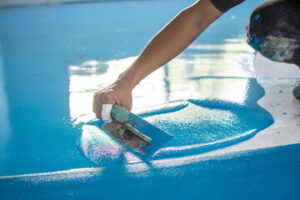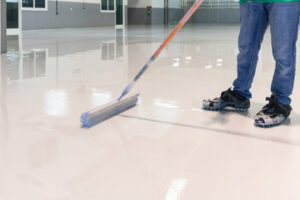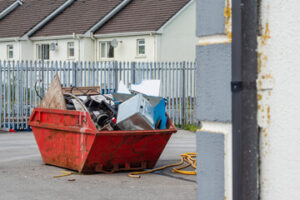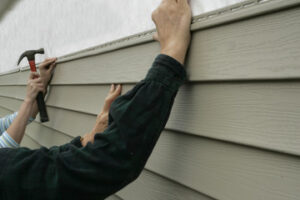A roof protects a home from rain, snow, sunlight, and extremes of temperature. Its basic parts include a self-sticking layer, felt or membrane, and a covering of shingles.

A top-tier roofer will waterproof the valleys (the areas where the slopes meet), and cap the ridge with special shingles. They will also add flashing around chimneys, windows, and joints. Contact Glacier Roofing for professional help.
Your choice of roofing materials will have a major impact on your roof installation costs. From basic asphalt shingles to luxury copper, the cost will vary according to the material and style you select. The type of roofing material you choose will also depend on your local climate, as some materials are not suitable in certain regions.
Before starting a reroofing project, homeowners should cut back trees that are encroaching on the roof. This will help to prevent tree branches from falling on the roof during the re-roofing process and damage it. It is also a good idea to move outdoor furniture, ceramic landscaping features and other items that could be hit by debris. The re-roofing team will also need to remove any satellite dishes, plumbing vent stacks or HVAC openings and vents that are located on the roof. This work will require caulking and flashing, adding to the overall re-roofing cost.
Among the many types of roofing available today, single-membrane flat roof treatments like EPDM, PVC and TPO are popular choices. These are durable, affordable and energy efficient. They can withstand punctures, tears and chemical spills, as well as combat bacterial growth and standing water.
Other options include asphalt shingles, concrete tiles and wood shakes. Wood shingles and shakes are attractive, but they are expensive and not recommended in areas that get a lot of rain or where wildfires are a risk. They are also time-consuming and labor-intensive to maintain.
Concrete tiles are an inexpensive alternative to clay tile roofs and can be made to resemble other roofing materials, including slate and wood. They are very durable and offer plenty of customization. However, they are heavy and can be damaged by rainwater or snow.
Underlayment
Underlayment is the first layer of protection from the elements in your roof. It prevents ice from building up and destroying shingles, it helps stop rain and snow from penetrating the roof deck, and it provides an extra layer of insulation. It’s also required by most shingle manufacturers.
Many roofers prefer to use synthetic underlayment, which is made from layers of rubber and asphalt polymers woven together. This material is more resilient than felt paper, which can tear easily. It also allows for expansion and contraction, resists UV rays, and is mold-resistant. It’s a great choice for climates that experience extreme weather.
Felt paper is still used by some, though it’s not as durable and doesn’t provide as much insulation or moisture resistance. It’s less expensive than some other options, though. It’s important to nail it down on the rakes (sides of the roof) and to lap each piece by at least 2 inches. This keeps the deck dry before shingles are installed and helps against wind uplift as well as increasing fire resistance.
Another option is a waterproof membrane that’s glued to the deck and is often called a roof diaphragm. These are popular in areas of the roof prone to leaks, such as valleys and around chimneys and vent pipes. They also work well for flat roofs, and are easy to install with a heat gun.
Some types of synthetic underlayment come with a built-in foil moisture barrier that eliminates the need for a separate 6 mm poly vapor barrier. They are available in fanfold pre-marked rolls, making them easy to handle on the roof. They are also more flexible than black felt and resist tears better than other underlayment materials, especially the lighter layers.
Shingles
The shingles are the external layer that covers and protects the roof deck. Today’s shingles are made of fiberglass or asphalt and come in various styles, colors, thicknesses, and ratings for longevity and fire resistance. You can find a variety of shingle options at home improvement stores, including premium heavyweight laminate shingles that look like natural wood and can last up to 50 years.
Shingles also offer several other features that homeowners appreciate. Impact resistance keeps the shingles from being damaged by hail or other debris, algae resistance prevents the growth of unsightly algae and moss, and fire resistance helps the shingles to resist damage from a house fire.
During a roof installation, the contractor must take care to cover the entire surface with shingles without leaving gaps or other openings. It is important to have a contractor who can work quickly and efficiently, because rain or snow can cause the shingles to lose their adhesive quality, resulting in leaks.
If the roof has valleys, it is important to install flashing to keep them watertight. These areas are some of the most susceptible to leaks, and should be completed before laying the shingles.
When selecting a shingle color, it is a good idea to check the color under outdoor lighting rather than florescent indoor lights. This will give a more accurate representation of how the shingles will look under real-world light conditions. Also, it is a good idea to get a professional opinion before making the final choice. A roofing expert can advise on shingle durability and performance, as well as help you choose the best color to match your house. Also, it’s a good idea to have a large tarp nearby to catch the thousands of nails that will fall off the new shingles.
Tiles
Clay or concrete tiles come in a range of styles to suit any aesthetic. They are durable and provide good protection against heavy rains. They can also resist extreme weather conditions, including UV rays from the sun. However, they require specialized roofing materials and installation to maintain their strength and beauty.
To ensure your tile roof lasts a long time, make sure to regularly clean it. This will prevent the accumulation of leaf debris in valleys and the buildup of moss or other organisms that can interfere with rainwater drainage. In addition, inspect the roof for loose or cracked tiles and ensure the fasteners are secure.
The type of tile you choose will depend on your roof structure and the climate where you live. For example, if you live in a rainy region, opt for a terra-cotta tile to withstand high winds and rainfall. However, if you live in a warm and dry area, a concrete tile may be more suitable.
If you want a roof that will blend seamlessly with your architectural style, consider flat concrete tiles. These are rectangular, one-sided tiles that are available in a variety of hues and designs and can complement most home styles.
There are several other types of tiles that are popular in certain regions of the world, such as pantiles and Barrel concrete tiles. Pantiles are made of semi-cylindrical tiles that form a ripple pattern, similar to the imbrex and tegula of ancient Mediterranean tile roofs. Barrels are a similar design, but with rounded cylinders that taper slightly at the end. These are more expensive than other tiles, but are worth the investment for their unique appearance and long lifespan.
Flashing
Flashing is a crucial component of roof installation and a top priority for any professional roofer. It’s a thin strip of corrosion-resistant metal that prevents water leaks around chimneys, joints, windows, and other features. It keeps water from seeping into walls and other vulnerable areas where it could cause rot, mold, mildew, and pest infestation.
There are many different types of flashing, each designed for a specific area and purpose. For example, step flashing is best for areas where a wall meets a sloping roof (like the top of a dormer). This type of flashing is typically installed in “steps” with shingles between each one so that water runs down each shingle and away from the structure.
Another important type of flashing is pipe flashing, which is used to protect areas where pipes run through a roof. This type of flashing is often shaped to conform to the pipe’s shape, so it can be easily fitted around each pipe. In some cases, it is also necessary to use flashing to protect the ridge of a roof. This is done using specialty materials like copper, which can be shaped and bent into place to create a watertight seal.
Ideally, flashing should be made from a corrosion-resistant metal like galvanized steel to avoid rust and other damage over time. It’s usually installed between the underlayment and shingles, and can be either metal or plastic. A top-rated roofer will carefully install each piece of flashing during the roofing process. If you’re thinking of re-roofing your home, it’s generally recommended that all flashing be replaced, as old or damaged flashing can lead to leaks. However, if you’re doing a roof repair on an existing home, it may be possible to reuse some of the old flashing if it is in good condition.








